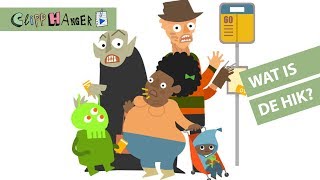Tuesday, 09 December, 2025г.
















Где искать: по сайтам Запорожской области, статьи, видео ролики
пример: покупка автомобиля в Запорожье
Ana 1
Ana u periodu 4-13 meseci. Simptomi koji ukazuju na deficit tirozin hidroksilaze, pre utvrđene dijagnoze i pre terapije.
Ana 4-13 months old. Symptoms of Tyrosine Hydroxylase Deficiency, before she was diagnosed with THD and before the l-dopa treatment.
Tyrosine Hydroxylase deficiency, also known as Recessive Dopa-Responsive Dystonia, is a rare metabolic disorder characterized by the lack of the enzyme involved in converting the amino acid tyrosine to Ldopa.
Patients with TH Deficiency can develop movement disorders, autonomic symptoms: blood pressure instability, temperature irregularities... abnormal eye movements and neurological impairment.
In the mildest cases, walking or running may be clumsy but little else may be noticed initially. Symptoms may progress slowly as the child gets older. One side of the body may seem weaker, or the child may begin to walk up on their tiptoes due to some tightness of the leg muscles. Attention difficulties in school are common. Children with mild symptoms are often treated successfully with medication.
In moderately affected cases, the child may not be able to walk at all, or walking may be extremely difficult. Unusual arm posturing or positions of their arms with attempts to walk or walk on their toes is common. Abnormal eye movements, tremor and speech delay may be present. Children with moderate symptoms often respond well to treatment but full benefit may take many months.
In the most severe cases children are physically disabled and affected from early infancy. This is sometimes known as the Infantile Parkinson’s disease variant. Patients may demonstrate all or some of the following symptoms;
- Muscle tightness: rigidity, spasticity
- Abnormal posturing: arching of the back
- Tremor
- Poor muscle control
- Abnormal eye movements: eye deviation upward, downward or towards the nose
- Strabismus: cross-eyed
- Ptosis-droopiness of the eyelids
- Speech delay
- Difficulties feeding or swallowing
- Constipation
- Torticollis-involuntary deviation of the head and neck
- Intermittent color changes
- Unexplained low body temperatures or fevers
- Low blood sugar
- Difficulty regulating blood pressure
Children with TH Deficiency are often considered clumsy or uncoordinated and are often initially diagnosed with cerebral palsy.
Похожие видео
Мой аккаунт


 У вашего броузера проблема в совместимости с HTML5
У вашего броузера проблема в совместимости с HTML5
![Hạ Long Bay - VD ft. Young VD [ACY dizz]](/images/mq/4/0b/6ZigMjMw2zxBac.jpg)

